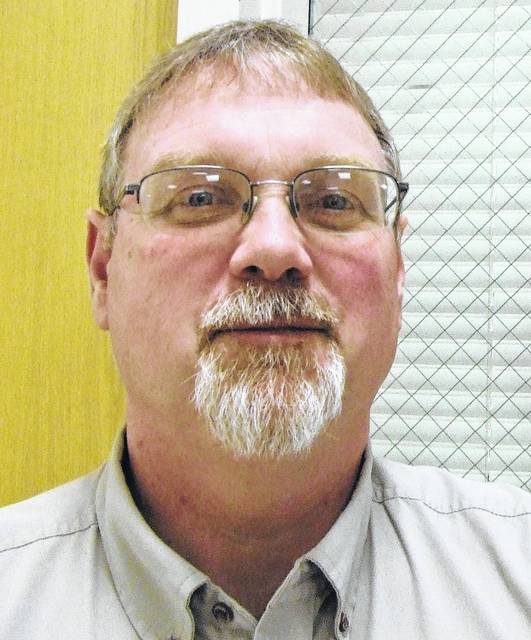
First off, this week I want to say “Thank you!” to all our veterans and their families both past and present. Not only should we thank the military this Veterans Day, but we should resolve to thank them throughout the year for the vital service they perform for our country! Thank you so much.
Farmers made great harvest progress this past week as Mother Nature continues to help us out keeping the weather in pretty good order. A little rain this week was good to allow farmers a chance to get a breather, as many have been running almost non-stop.
Since many have been working what seems to be almost non-stop, I encourage all of you to take some much-needed sleep breaks, eat healthy and just be safe. If we do those little things we can probably reduce unwanted accidents and mistakes.
Also, there have been multiple reports of Vomitoxin and other mycotoxins associated with this year’s corn crop. Contributors that have led to fairly high levels of one or more ear rots (Gibberella, Fusarium, Diplodia and Trichoderma) in some corn fields would include such things as: slow grain dry-down, delayed harvest, and late-season rainfall.
Of these, Gibberella ear rot (GER) has been the most frequently reported and is the ear rot of greatest concerns since grain harvested from GER-affected fields will be contaminated with vomitoxin and other mycotoxins.
One of the primary consequences of GER is vomitoxin contamination of dried distiller’s grains with solubles (DDGS), a nutrient-rich co-product of ethanol production that is commonly sold as an ingredient for animal feed. Vomitoxin is not destroyed during ethanol production nor is it removed in the ethanol fraction, but rather becomes concentrated in the grain fraction.
This leads to three-fold higher levels of the toxin in DDGS over the levels found in the original grain. Consequently, ethanol plants may reject GER-affect grain with high levels of vomitoxin.
There is also a Respiratory Alert associated with moldy grain.
Harvesting and handling moldy grain may expose farmers to mycotoxin and other moldy conditions in the grain dust. Dust in grain harvested from GER-affected fields contain a mixture of tiny pieces of grain, husks, and cobs, all of which may be contaminated with vomitoxin, as well as pieces of fungal mycelium (mold).
In fact, husks and cobs are usually more contaminated with mycotoxins than the grain. Breathing grain dust can have adverse effects on the human respiratory system. When the dust is also suspect of mycotoxins, it is especially necessary to take precautions.
If there is a threat to moldy grain, it is advisable wearing a disposable, 2-strap N95 mask (respirator) that helps protect the worker from breathing in dusty, moldy and toxic substances.
This type of personal protection equipment will filter out at least 95% of the dust and mold in the air. The 1-strap mask does not have this level of protection, and is basically worthless in agricultural environments.
Unfortunately, the COVID-19 pandemic has made it difficult to purchase the recommended respirators for agricultural work. The suppliers have increased manufacturing of these items, however some local outlets are still limited in their product availability due to an increased need to service medical personnel.
Finally this week, Ohio State University Extension offices of Brown, Clermont, and Highland Counties created the Southern Ohio Farm Show, a weekly television-style program that has aired for the past 27 weeks. Each episode features several topics related to agriculture, family and consumer sciences, community development, 4-H youth development, and local community events.
Starting this month, the Southern Ohio Farm Show will expand its viewership territory by partnering with Extension Offices in Clinton, Fayette, Pickaway, Pike, and Ross Counties.
Each new episode of the Southern Ohio Farm Show is released weekly on Wednesdays. The program is broadcasted via a live Zoom, Facebook, YouTube, and is available on someNew local access channels. To register for the weekly Zoom, visit: go.osu.edu/SOFSZoomRegistration
Previous episodes are available on the OSU Highland County YouTube channel.
The program is created through a collaborative effort of Extension personnel and community members. Dr. Brooke Beam, OSU Extension Educator in Highland County, edits and produces the weekly program. If you are interested in participating in the Southern Ohio Farm Show, contact your county’s Extension Office.
For November, each episode will feature a different recipe or cooking technique to help get your Thanksgiving meal ready for the table. The Nov. 18 episode will discuss meat science techniques for turkeys.
Previous episodes have included topics including beekeeping, livestock production, soil science, agronomic crops, and meat science. In December we will be hosting a holiday lighting contest for all communities to participate in.
Stay tuned for more details.
Tony Nye is the state coordinator for the Ohio State University Extension Small Farm Program and has been an OSU Extension Educator for agriculture and natural resources for over 30 years, currently serving Clinton County and the Miami Valley EERA.


